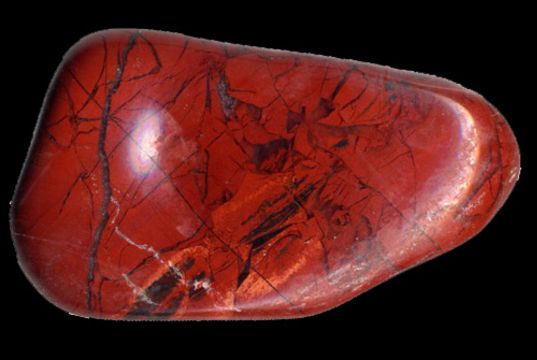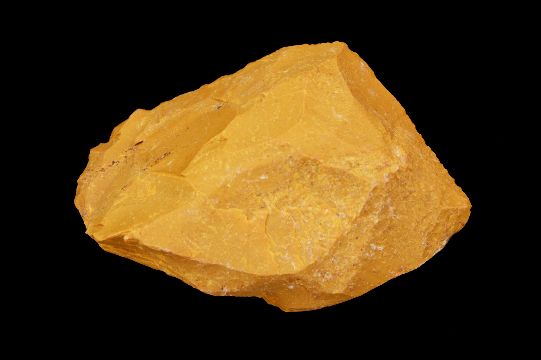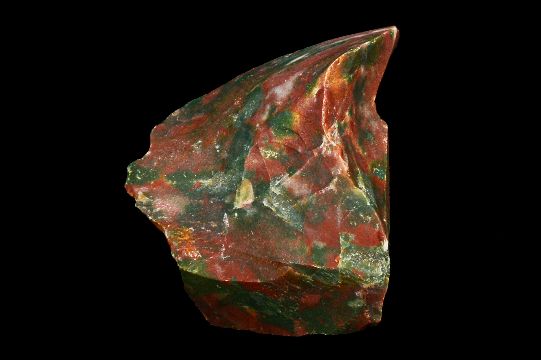Jasper – Mineral and Healing Properties
Chemistry: SiO2
Class: Tectosilicate
Subclass:
Uses: Jewelry, ornamental stone and as mineral specimens.



Jasper is a variety of chert, which is the general term applied to granular cryptocrystalline quartz varieties. It is thought to form by the replacement of calcareous rock by silica-rich solutions, also by direct marine precipitation of silica gel or organic silica. Jasper is commonly associated with interbedded hematite ore deposits of Precambrian age. It occurs as a petrifying agent in fossil wood and bone. Jasper’s typical reddish brown color is due to hematite or goethite impurities.
Origin Of The Name
The name means “spotted or speckled stone”, and is derived via Old French jaspre (variant of Anglo-Norman jaspe) and Latin iaspidem (nom. iaspis)) from Greek iaspis, (feminine noun) from a Semitic language (cf. Hebrew Akkadian yashupu), ultimately from Persian yap.
Interesting Facts
The jasper is, along with Heliotrope (bloodstone), one of the traditional birthstones for March. It is also a stone in the Jewish High Priest’s breastplate, described in Exodus 28.
Green jasper was used to make bow drills in Mehrgarh between 4th-5th millennium BC. Jasper is known to have been a favorite gem in the ancient world; its name can be traced back in Arabic, Persian, Hebrew, Assyrian, Greek and Latin. On Minoan Crete within present day Greece jasper was carved to produce seals circa 1800 BC, as evidenced by archaeological recoveries at the palace of Knossos.
Where Is It Found
Jasper is typically found in veins and cracks in volcanic rocks, often together with chalcedony and agate. Jasper is found in Australia, Brazil, Canada, Egypt, India, Kazakhstan, Madagascar, Russia, Uruguay and the United States.
What Do We Do With It
Jasper has been used as gemstones and other ornamental objects for thousands of years.
In medieval times jasper was said to give the wearer, with God’s help, the power to heal insanity and to heal those possessed by devils. In the fourth century, the wearing of green jasper was said to bring rain and to cure snake bites. Jasper amulets were engraved with passages from the Book of the Dead by the ancient Egyptians to procure safe passage for the deceased in the realm of the dead.
Some of the earliest primitive stone tools (axes) fashioned by man’s ancestors 2.5 million years ago in the Omo valley in Ethiopia, were made of quartz varieties such as jasper or chert. These materials were used because of their hardness and their isotropic brittleness which made it possible to shape the tools with relative ease.
Jasper is also used for ornamentation or as a gemstone. It can be highly polished and is used for vases, seals, and at one time for snuff boxes.
Metaphysical Uses
The unique artistry of Jasper is that of Nature itself – golden sunshine, a nighttime sky, poppy fields or a deep green forest, desert sands, the undulating ocean, red rock canyons, sweeping mountains. Each stone is a masterpiece of the Creator, bold and primitive in style, solid and earthy in form, with a warm, harmonious energy that resonates with the primal self.
An elemental Earth stone, Jaspers frequency is slow and constant, aligned with the electromagnetic energies of the planet. It enables one to be more present in the physical body and conscious of Nature and ones surroundings. It encourages one to celebrate moments of isolation to absorb, reflect, and connect with these energies and enkindles an awareness of the spiritual connection we hold with all living things. Known as the Supreme Nurturer, Jasper is a stone of grounding and stability, providing comfort and security, strength and healing. Its presence balances the aura to a level of wholeness and peace, and acts as a reminder that one is not here on the physical plane simply for oneself, but to bring joy and substance to others.
Historically, Jasper is traceable to all ancient peoples and civilizations. Worn by shamans, priests and kings, it was considered sacred and a powerful protection stone, for both the physical world and in the spiritual realm. Amulets of Jasper were carved by the Egyptians with symbols and inscriptions from the Book of the Dead and buried with mummified remains for safe passage in the after life. It was highly utilized in many cultures for engraving cylinder seals, signet rings, and special talismans depicting astrological and religious images. It was the twelfth stone in the Breastplate of the Jewish High Priest, and the apostle Peter is supposed to have derived his name from Jasper, the rock upon which Christ would build his church. To the medieval world and the Native Americans, Jasper was the rain bringer and highly regarded as a stone for dowsing.
Physical Characteristics
Color: Usually red, yellow, brown or green in color; and rarely blue.
Luster: Dull vitreous to greasy .
Transparency: Translucent to opaque.
Crystal System: Hexagonal-R; 32 (trigonal-trapezohedral)
Crystal Habits: Massive microgranular quartz.
Cleavage: Cryptocrystalline quartz shows no cleavage, although parting may occur along laminations.
Fracture: Conchoidal
Hardness: 6.5 to 7
Specific Gravity: 2.5 to 2.9
Streak: White


